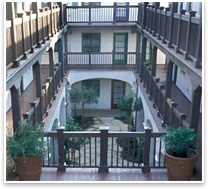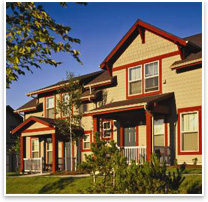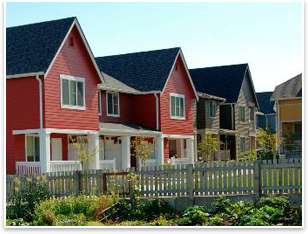| AIA Announces Recipients of 2007 AIA/HUD Secretary Awards
by Zach Mortice
Assistant Editor
Summary: This year’s AIA/HUD Secretary Awards, presented on May 3 at the AIA 2007 National Convention, go to:
- Cearnal Andrulaitis, LLP, and the Housing Authority of Santa Barbara for “Excellence in Affordable Housing Design”
- Torti Gallas & Partners, Inc., and the Tacoma Housing Authority for “Creating a Community Connection”
- Mithun and Tom Phillips of the Seattle Housing Authority for “Excellence in Affordable Housing Design.”
On May 3 at the 2007 AIA National Convention in San Antonio, the AIA presented awards to the winners of the 2007 AIA/HUD Secretary’s Housing and Community Design Awards. This joint program between the AIA Center for Communities by Design, the AIA Housing and Custom Residential Knowledge Community, and the U.S. Department of Housing and Urban Development (HUD) reflects the continuing collaboration between the Institute and these federal agencies to encourage excellence in affordable residential design and call attention to the importance of architecture in designing livable communities.
 EXCELLENCE IN AFFORDABLE HOUSING DESIGN EXCELLENCE IN AFFORDABLE HOUSING DESIGN
El Carrillo Housing Authority, Santa Barbara, Calif.
By Cearnal Andrulaitis LLP
For the Housing Authority of Santa Barbara
Cearnal Andrulaitis and the Santa Barbara Housing Authority responded to a growing homeless population and the closing of several housing complexes by radically revising preconceived notions of what public housing is supposed to be, thus earning high praise from the jury. “Wow,” they said. “This development has expanded our idea of what affordable can be when there is a commitment to go all the way.” The El Carrillo Housing Authority features ornate Spanish Colonial Revival flourishes with a terra-cotta roof and an open “town square” courtyard designed to offer a meditative, public gathering space. The project also houses a wide-range of resident services, like job training and placement facilities, as well as independent living suites for persons with disabilities. “There were a number of angels at work here with significant private investment to make a beautiful, dignified, and affordable design where usually it is minimal and utilitarian with little aesthetic consideration,” the jury said. “The design is of a high order and the social responsibility even higher.”
Photo © Amber Medley.
 CREATING COMMUNITY CONNECTION CREATING COMMUNITY CONNECTION
Salishan Neighborhood Revitalization c/o Tacoma Housing Authority, Tacoma, Wash.
By Torti Gallas & Partners Inc., with Associate Architect Environmental Works and Consulting Architects McGranahan Architects
For the Tacoma Housing Authority
Water run-off from earlier development along Swan Creek in Tacoma, Wash., had emptied the stream of salmon and damaged the development’s immediate ecosystem, and calls for environmental renewal came along with the need to renovate the frugally constructed temporary housing units that were built there 60 years ago. Torti Gallas & Partners’ project filtrates 91 percent of all stormwater on-site with bio-retention swales, vastly reducing the pollution into the creek. The new urbanist pedestrian-friendly neighborhood also benefits from the flowing integration of park space and pathways, creating a design that is sensitive to the needs of the surrounding community and environment. The jury had strong praise for the “gracious spaces and tremendous community amenities” of the development.
Photo © Doug Scott.
 COMMUNITY-INFORMED DESIGN COMMUNITY-INFORMED DESIGN
High Point Community, Seattle
By Mithun, with Associate Architect Streeter and Associates
For the Seattle Housing Authority
Mithun and the Seattle Housing Authority tightened up a sprawling up a sprawling 120-acre post-WWII development into a classic New Urbanist walkable community, and the 716 resulting housing units offer a fresh take on traditional residential forms. “This project has set the bar!” raved the jury. Fifty percent of the units are designated for low-income residents, and the rest will be priced at market value, inviting a variety of incomes, ethnicities, and family structures to invest in this unique community identity. The jury called this project the “highest standard for participatory multi-cultural, multi-language incorporated in the design process. It allows for individuality as well as serving the community.”
Photo © Steve Hall.
|


 EXCELLENCE IN AFFORDABLE HOUSING DESIGN
EXCELLENCE IN AFFORDABLE HOUSING DESIGN CREATING COMMUNITY CONNECTION
CREATING COMMUNITY CONNECTION COMMUNITY-INFORMED DESIGN
COMMUNITY-INFORMED DESIGN